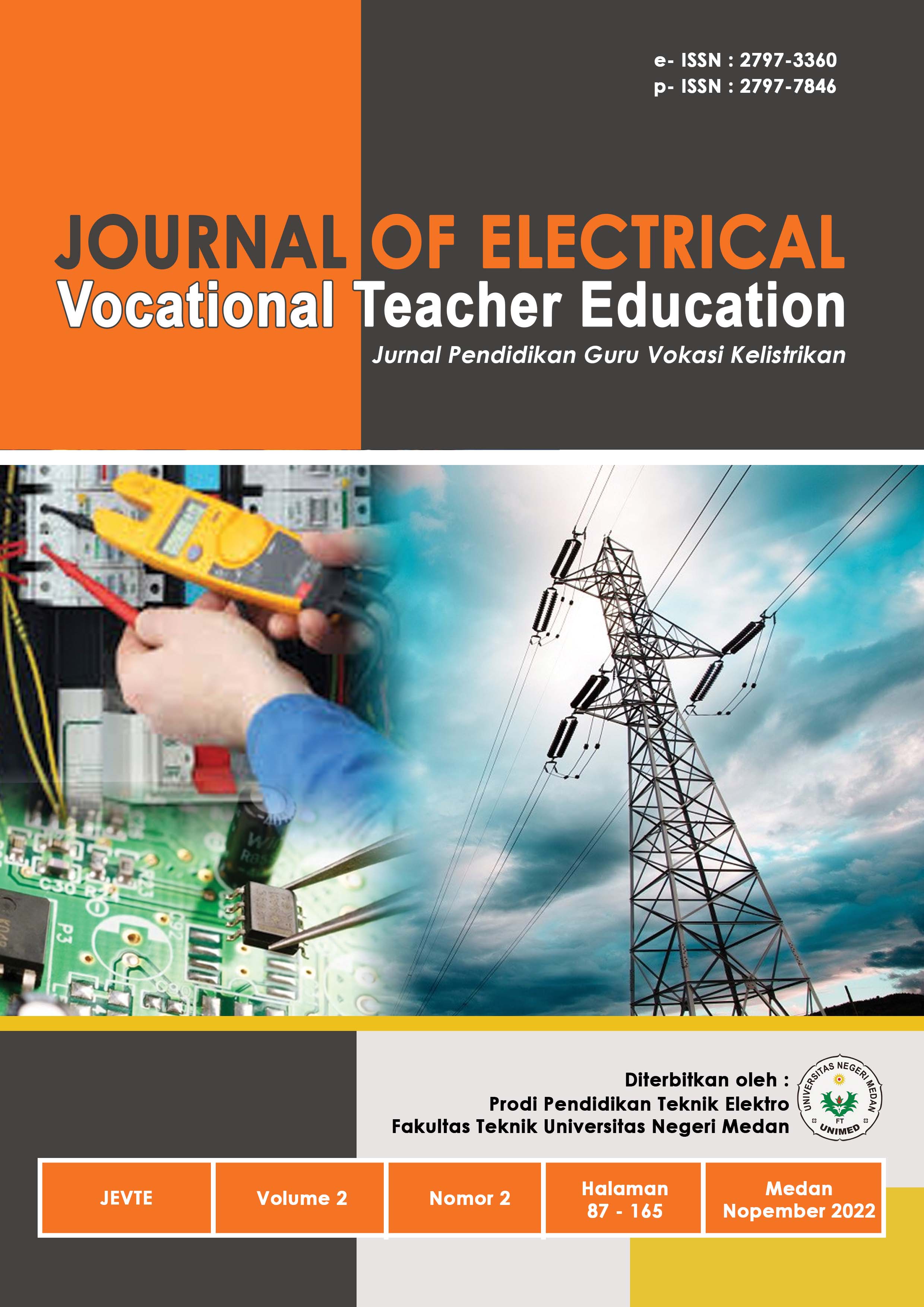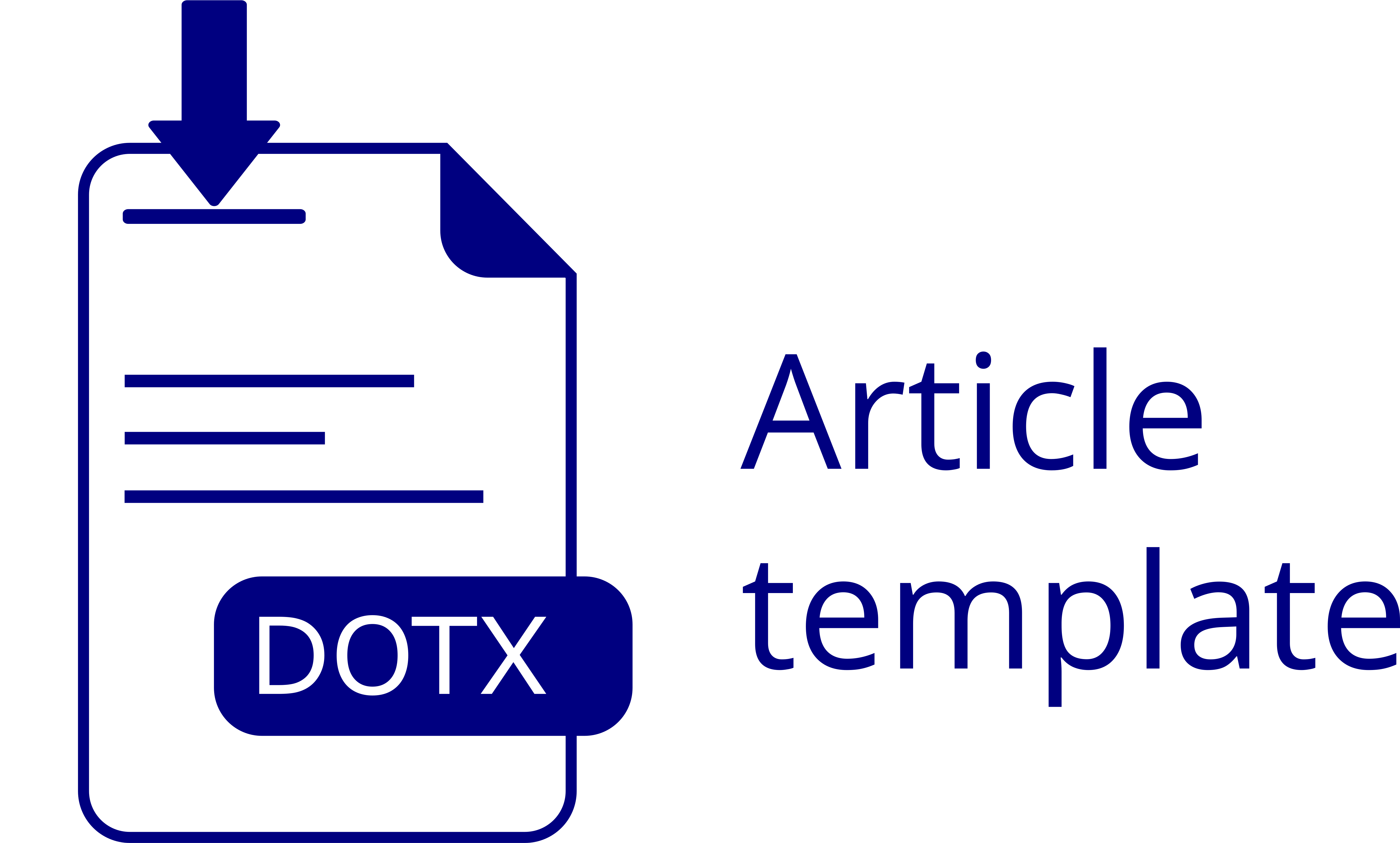PENGEMBANGAN LEMBAR KERJA PRAKTIKUM MATA PELAJARAN INSTALASI MOTOR LISTRIK KELAS XITEKNIK INSTALASI TENAGA LISTRIK DI SMK NEGERI 1 LUBUK PAKAM
DOI:
https://doi.org/10.24114/jevte.v2i2.40582Abstract
AbstractThis study aims to develop a practicum worksheet for class XI TITL electric motor installation subjects at SMKN 1 Lubuk Pakam, to test the feasibility of the practicum worksheet for electric motor installation subjects that have been made for class XI at SMKN 1 Lubuk Pakam. The methodology of this research is research and development (Research & Development) with the development model of Four-D Models. Four-D Models consists of 4 stages, namely: define, design, develop, disseminate. The Dissaminate stage was not carried out due to the narrow scope of research. The questionnaire is validated by an evaluation expert. Based on the results of the analysis and discussion, it is known that this development research produces learning resources in accordance with the syllabus, namely practicum worksheets consisting of 11 practical activities, the feasibility level of practicum worksheets is known from the results of the assessment of material experts, media experts, and the results of teacher and student responses. Abstract must reflect the overall substance of the article content and be able to help readers determine its relevance to their interests and decide whether to read the document in its entirety. The results of material expert validation covering aspects of content feasibility, language, presentation, and benefits reached an average score of 116 with a percentage of 92.8% in the "very feasible" category. The results of media expert validation covering aspects of appearance, ease of use, consistency, format, and graphics reached an average score of 99.4 with a percentage of 90.36% in the "very feasible" category. Based on the response, the teacher obtained an average score of 117.33 with a percentage of 93.86%. Meanwhile, for the response, students obtained an average score of 102.68 with a percentage of 85.56% in the "very feasible" category.Key Words: practicum worksheet, installation of electric motors. AbstrakPenelitian ini bertujuan untuk mengembangkan Lembar kerja praktikum mata pelajaran instalasi motor listrik kelas XI TITL di SMKN 1 Lubuk Pakam, untuk menguji kelayakan lembar kerja praktikum mata pelajaran instalasi motor listrik yang telah dibuat untuk kelas XI di SMKN 1 Lubuk Pakam. Metodologi penelitian ini adalah penelitian dan pengembangan (Research & Development) dengan model pengembangan Four-D Models. Four-D Models terdiri dari 4 tahap, yaitu: pendefinisian (define), perancangan (design), pengembangan (develop), penyebaran (Dissaminate). Tahap Dissaminate tidak dilaksanakan karena lingkup peneltian yang sempit. Instrumen yang digunakan adalah instrumen non tes berupa angket dengan skala Likert 5 pilihan jawaban. Angket divalidasi oleh seorang ahli evaluasi. Berdasarkan hasil analisis dan pembahasan, diketahui bahwa penelitian pengembangan ini menghasilkan sumber belajar sesuai dengan silabus yaitu lembar kerja praktikum yang terdiri dari 11 kegiatan praktik, tingkat kelayakan lembar kerja praktikum diketahui dari hasil penilaian ahli materi, ahli media, dan hasil respon guru dan siswa. Hasil validasi ahli materi yang meliputi aspek kelayakan isi, kebahasaan, sajian, dan manfaat mencapai rata-rata skor 116 dengan presentase 92.8% pada kategori œsangat layak. Hasil validasi ahli media yang meliputi aspek tampilan, kemudahan penggunaan, konsistensi, format, dan kegrafikan mencapai rata-rata skor 99.4 dengan presentase 90.36% pada kategori œsangat layak. Berdasarkan respon guru memperoleh skor rata-rata 117.33 dengan presentase 93.86%. Sementara itu untuk respon siswa memperoleh skor rata-rata 102.68 dengan presentase 85.56% pada kategori œsangat layak.Kata Kunci : lembar kerja praktikum, instalasi motor listrik.References
Arikunto, Suharsimi. (2010). Prosedur Penelitian Suatu Pendekatan Praktik. Jakarta: Rineke Citra.
Devita cahyani, (2018) penerapan lembar kerja peserta didik bebasis life skill untuk meningkatkan keterampilan proses dan sikap ilmiah. Jurnal visipena. volume 9.STKIP kusuma negara. (Diakses pada 05 November 2019)
Hangestiningsih, Endang. Zulfiati, Heri Maria. & Johan, Arif Bintoro. (2015).Pengantar Ilmu Pendidikan, Diktat, Fakultas Keguruan Ilmu Pendidikan, Universitas Sarjanawiyata Tamansiswa, Yogyakarta.
Putra, J. S. M. Prabakti Endramawan. Hariwibowo, Agus. (2016). pembuatan trainer instalasi motor 3 phase. Jurnal Pendidikan Teknik Elektro volume 1, IKIP PGRI Madiun Madiun. (Diakses pada 05 November 2019)
Karsi & Sahin, (2009). Developing Worksheet Based On Science Process Skills; Factors Affecting Solubility. Journal Of Science Learning And Teaching, I(10): 1-12(Diakses pada 05 November 2019)
Mustaghfirin, Amin. (2014). Instalasi Motor Listrik. Kementerian Pendidikan Dan Kebudayaan Indonesia. Jakarta (Diakses pada 10 Juni 2019)
Nurpradana, M. A. A. & Ismayanti, Euis. (2017). Pengembangan Jobsheet Instalasi Motor Listriktiga Fasa Menggunakan Direct Instruction Di Smkn 2 Surabaya. Jurnal Pendidikan Teknik Elektro Volume 06. Fakultas Teknik Universitas Negeri Surabaya (Diakses pada 02 November 2019)
Prawira, D. (2006). Modul SS-02 Belajar dari Kegiatan di Luar Kelas (Laboratorium).(Online) http://repository.unhas.ac.id/ (diakses 15 Juni 2019).
Rahayuningsih, E. & Dwiyanto, D. (2005). Pembelajaran di Laboratorium. Yogyakarta: Pusat Pengembangan Pendidikan UGM.
Sugiyono. (2018). Metode Penelitian Kuantitatif, Kualitatif, dan R&D. Bandung: Alfabeta.
Thiagarajan, S., Semmel, D. S & Semmel, M. I. (1974). Instructional Development For Training Teachers Of Expectional Children. Minneapolis, Minnesota: Leadership Training Institute/Special Education, University Of Minnesota.(Diakses pada 10 Juni 2019)






